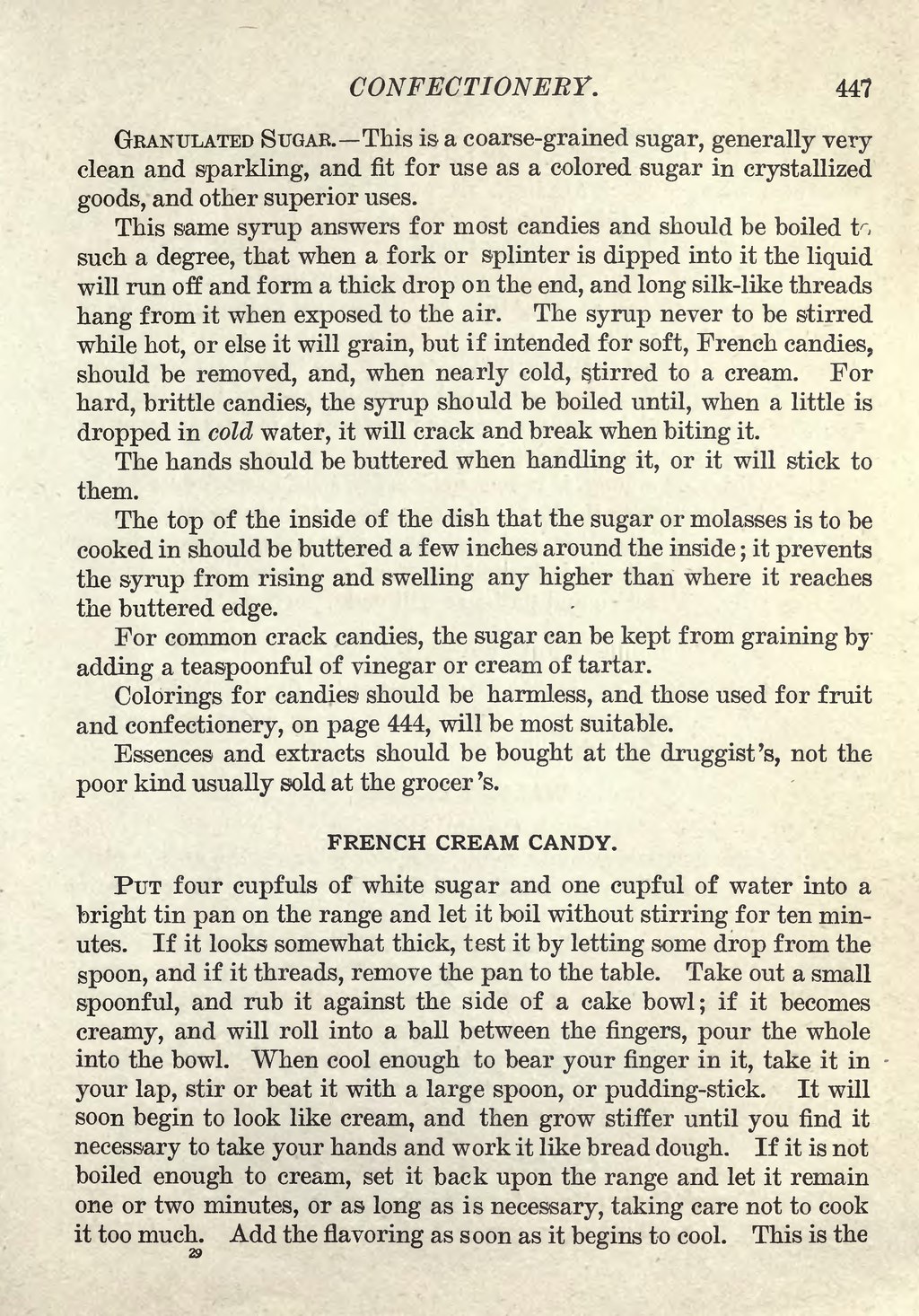CONFECTIONERY. 447
GRANULATED SUGAR. This is a coarse-grained sugar, generally very clean and sparkling, and fit for use as a colored sugar in crystallized goods, and other superior uses.
This same syrup answers for most candies and should be boiled i r > such a degree, that when a fork or splinter is dipped into it the liquid will run off and form a thick drop on the end, and long silk-like threads hang from it when exposed to the air. The syrup never to be stirred while hot, or else it will grain, but if intended for soft, French candies, should be removed, and, when nearly cold, stirred to a cream. For hard, brittle candies, the syrup should be boiled until, when a little is dropped in cold water, it will crack and break when biting it.
The hands should be buttered when handling it, or it will stick to them.
The top of the inside of the dish that the sugar or molasses is to be cooked in should be buttered a few inches around the inside ; it prevents the syrup from rising and swelling any higher than where it reaches the buttered edge.
For common crack candies, the sugar can be kept from graining by adding a teaspoonful of vinegar or cream of tartar.
Colorings for candies 1 should be harmless, and those used for fruit and confectionery, on page 444, will be most suitable.
Essences and extracts should be bought at the druggist's, not the poor kind usually sold at the grocer 's.
FRENCH CREAM CANDY.
PUT four cupfuls of white sugar and one cupful of water into a bright tin pan on the range and let it boil without stirring for ten min- utes. If it looks somewhat thick, test it by letting some drop from the spoon, and if it threads, remove the pan to the table. Take out a small spoonful, and rub it against the side of a cake bowl; if it becomes creamy, and will roll into a ball between the fingers, pour the whole into the bowl. When cool enough to bear your finger in it, take it in your lap, stir or beat it with a large spoon, or pudding-stick. It will soon begin to look like cream, and then grow stiffer until you find it necessary to take your hands and work it like bread dough. If it is not boiled enough to cream, set it back upon the range and let it remain one or two minutes, or as long as is necessary, taking care not to cook it too much. Add the flavoring as soon as it begins to cool. This is the
�� �
